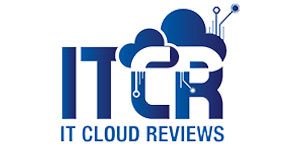The Windows operating system may surprise you with its performance if you got the best hardware configuration. You may still struggle with the slow startup in Windows 11 or earlier versions if you have a lot of startup items added to your boot list. Whenever you install an application, it automatically adds it to the startup list.
You can fix slow startup in Windows 11 if you know how to speed up Windows 11 startup performance. You can perform manual steps to boost Windows 11 performance or make use of the best PC booster software for Windows. Let us try the basic steps before we jump onto the automated process to optimize Windows performance. The best Windows optimization software can speed up Windows 11 and earlier versions without you worrying about performance.
Table of Contents
Disable Unwanted Startup Programs
The app section can help you disable unwanted startup apps on Windows. This will help you get a fast boot and reach your desktop without waiting for all the apps to load on Windows.
Step 1. Press the Win key and click on the Settings option (Gear Icon). You can also try the (Win + I) shortcut key to access the Settings window.
Step 2. Click on the Apps tab in the left panel. Scroll through the right panel and click on the Startup option at the bottom of the list.
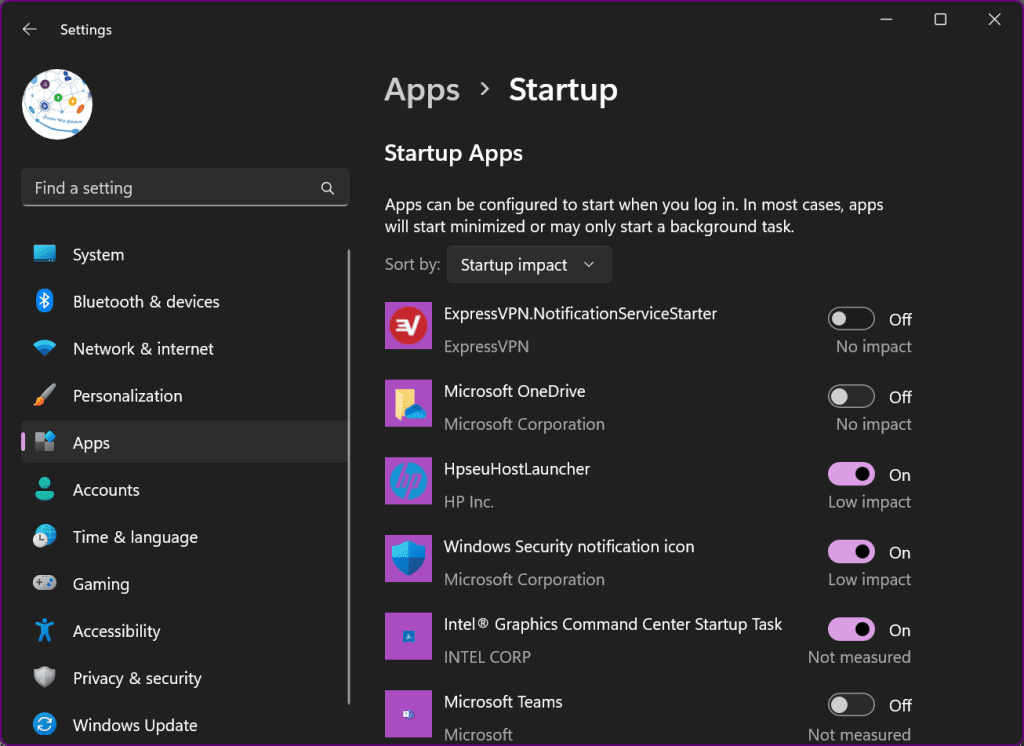
Step 3. You will find all the enabled and disabled apps in the list. These are not all the apps that are installed on your computer. These are just the apps that are listed in your Startup list.
Step 4. Sort apps by Startup Impact to line up all the heavy apps on the top of the list. These apps will impact your boot performance.
Step 5. Toggle OFF the app that you don’t want to load when you boot your PC to the Desktop. Apps that are toggle OFF will not load when you reboot your PC. You always have the option to access these apps from the Start menu or the search bar.
Disable Startup Programs from Task Manager
Task Manager is another utility that allows you to check and disable startup items on your PC. You can check the startup items with their startup impact. You can enable or disable the app from this window.
Step 1. Right-click on the Start button and click on the Task Manager option. You can also try the (Ctrl + Shift + Esc) keys to access the Task Manager window.
Step 2. Click on the three horizontal bars on the top left to open the navigation menu and click on the Startup Apps option in the panel.
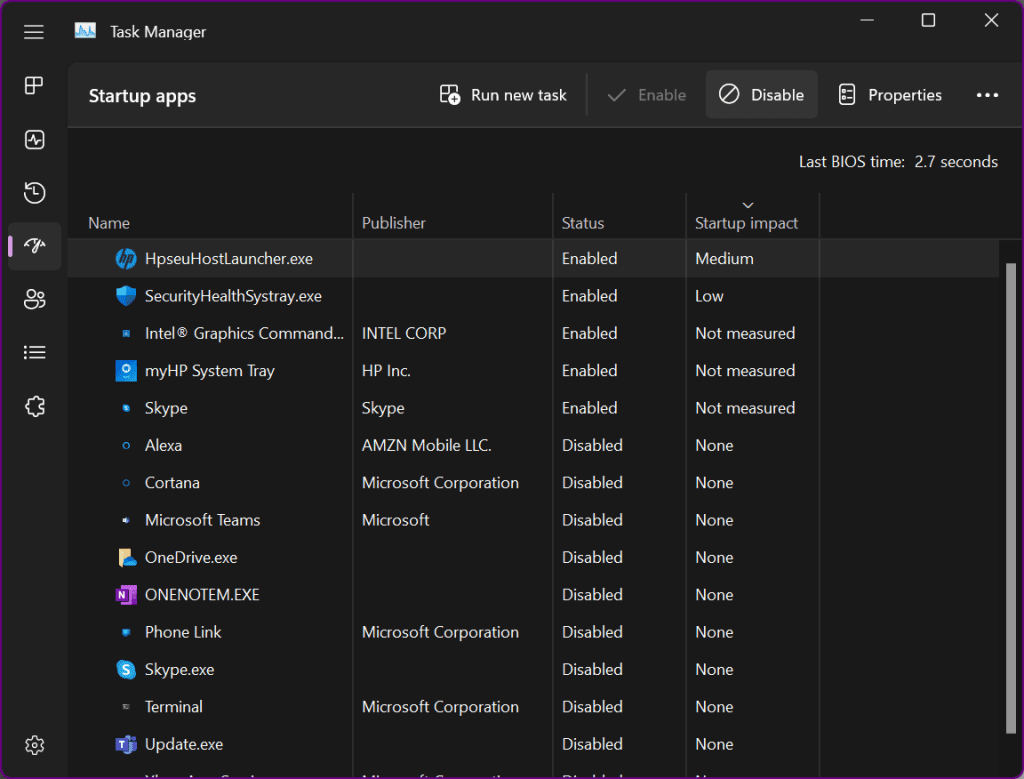
Step 3. Click on the Startup Impact column to sort apps by Startup Impact.
Step 4. Select the app that you think you don’t want to load when you boot your PC and put a high or medium impact on your PC boot time.
Step 5. Click on the Disable button to stop the app from being loaded when you boot the PC.
Uninstall Old & Unused Apps
Your system can be cluttered with a lot of unused apps. You should periodically revisit your app section to delete unwanted apps and fix slow startup in Windows 11.
Step 1. Press the Win key and click on the Settings option (Gear Icon). You can also try the (Win + I) shortcut key to access the Settings window.
Step 2. Click on the Apps tab in the left panel. Scroll through the right panel and click on the Installed Apps option at the top of the list.

Step 3. Sort apps by size large to small and it will show all the heavy apps on the top of the list.
Step 4. Click on the 3 dots on the right side of the app and click Uninstall.
Step 5. Follow the uninstallation wizard and uninstall the application from your PC. Do the same with all the old and unwanted apps that you don’t want to keep on your PC.
Run a Virus Scan
A deep virus scan can figure out if there is a bloatware infection or any malicious activity that is hampering your PC performance. Infections can hamper the PC performance and if not taken care of, they may result in a no-boot situation. Always ensure that you run a Microsoft Defender scan on a regular basis or scan your PC with a trusted and effective antivirus application.
Initiate Disk Defragmentation
Disk Defragmentation is a process to defrag the fragmented sections on your hard drive sectors. It can organize your used and unused sectors in a single set so that all the fragmented space can be made available to reuse for new files. You can use this inbuilt Windows utility to arrange the files on the hard drive sectors.
Step 1. Press the Window key and type Disk Defrag in the search bar.
Step 2. Click on the Defragment and Optimize Drives app from the search results.
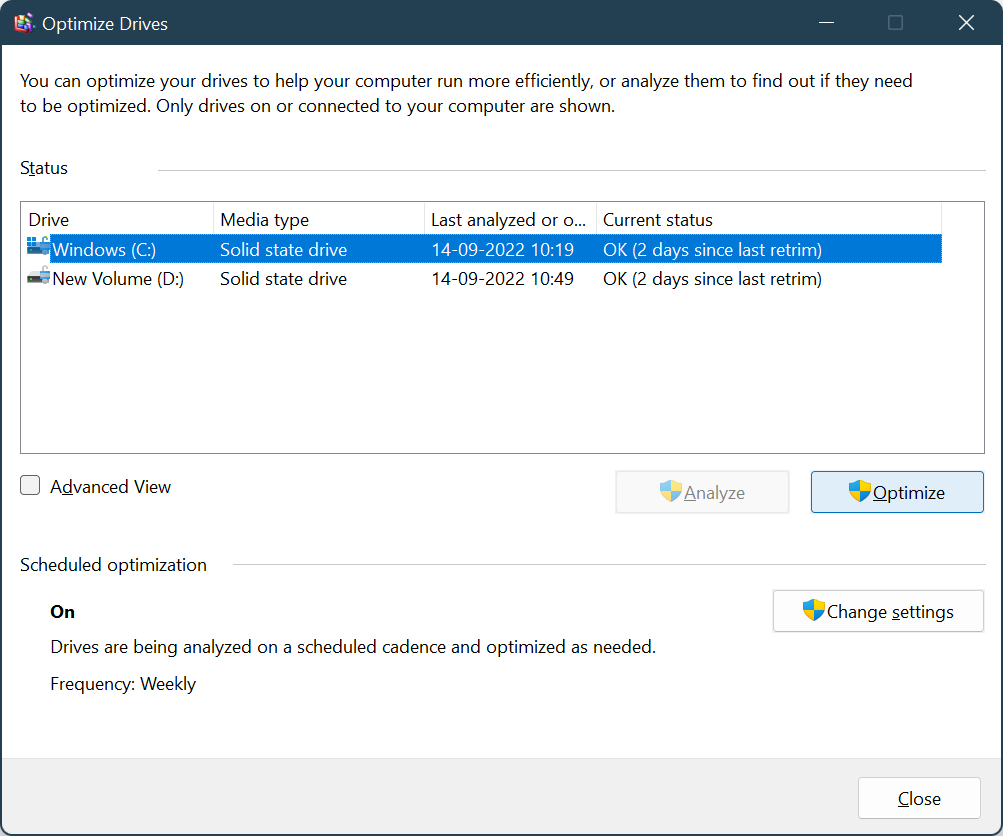
Step 3. Select the C: Drive and click on the Analysis button. Let it scan and come up with the results. If there are any fragmented sectors, we will need to defragment them.
Step 4. Click on the Optimize button to defragment the fragmented sectors. Do the same with the D: Drive and other hard drive partitions on the disk.
Use the Best Windows Optimizer Software
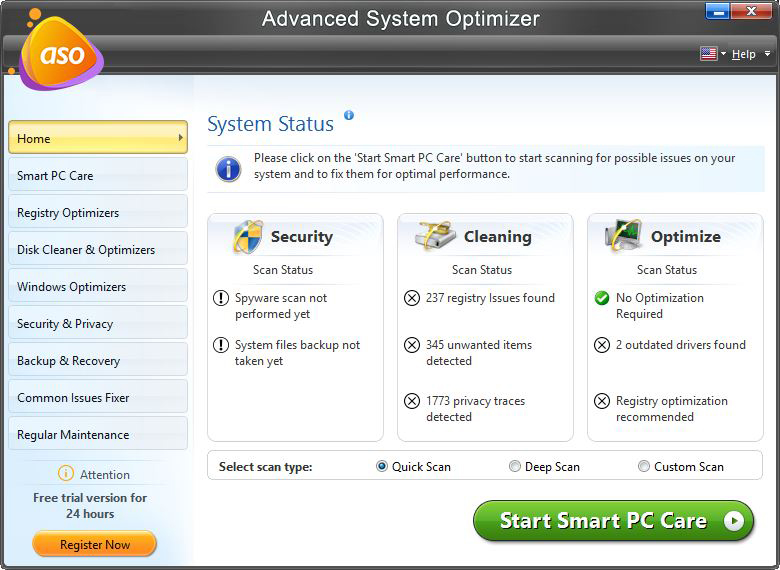
Advanced System Optimizer is an intuitive PC booster software for Windows 11 and earlier versions. This Windows optimization software can ensure that your PC is in a good state and runs as good as new. It has multiple inbuilt utilities to optimize RAM, boost performance, enhance your gameplay, manage startup items, optimize the registry, clean up disk, uninstall apps, and do a lot more on Windows. It can perform regular optimization and scheduled intervals to fix slow startup in Windows 11 and earlier versions.
Final Words
This article on how to fix slow startup in Windows 11 and speed up Windows 11 has the best tips and tricks to enhance boot time. You can boost Windows 11 performance manually or with the help of the best PC booster software for Windows. Advanced System Optimizer is a one-stop solution for all optimization, cleanup, security, and backup-related issues. Keep it Optimized!
Also Read: 5 Ways to Fix Bluetooth Driver Issues on Windows 11 / 10
